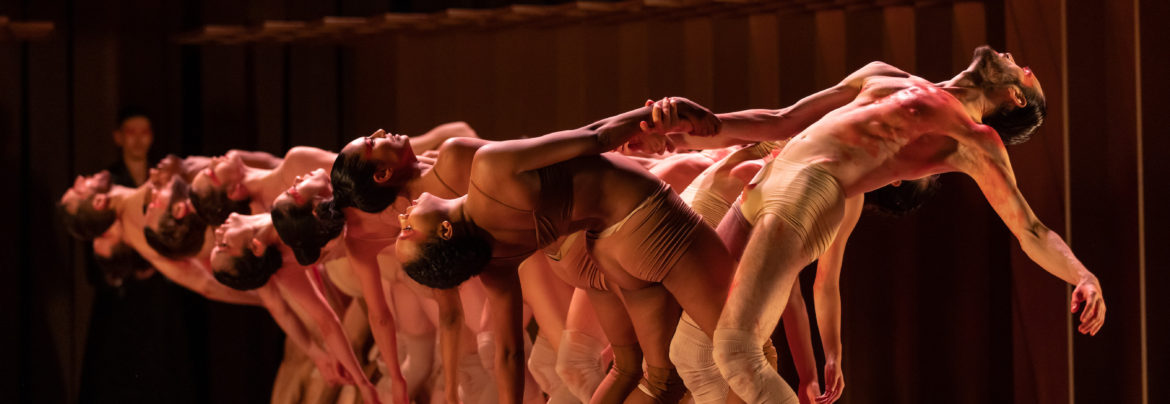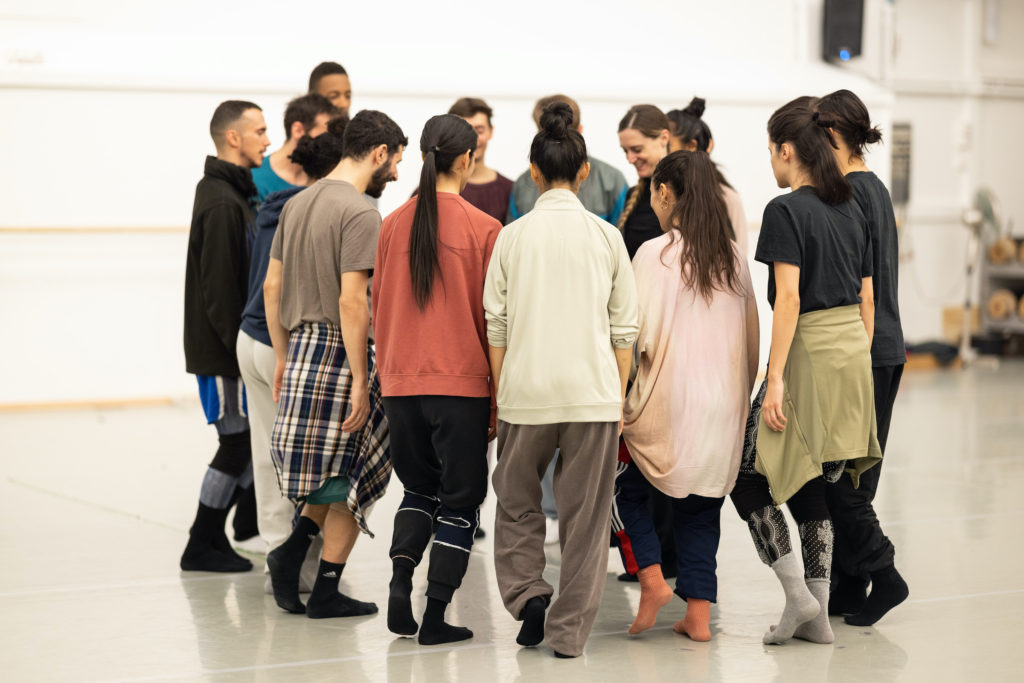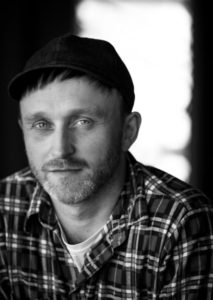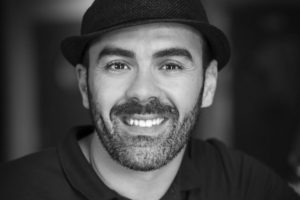Making Traces: Cherkaoui at Ballet du Grand Théâtre de Genève - Vancouver Ballet Society
- Home
- Features 2020 - 2023
- Making Traces: Cherkaoui at Ballet du Grand Théâtre de Genève

By Jenn Edwards
Sidi Larbi Cherkaoui is rounding out his first season as artistic director of Ballet du Grand Théâtre de Genève with a great sense of accomplishment. When we recently spoke on Zoom, Cherkaoui was clear about his vision for the company — to foster connection and collaboration, between dance and other art forms, and across cultures.
Cherkaoui is no stranger to the company, having made his first piece there in 2005. This was after then artistic director, the late Philippe Cohen, saw his work for les ballets C de la B, a groundbreaking Belgian collective whose work was messy, theatrical, and often very funny. Back then, Cherkaoui had almost no experience working with the elite athletes of the ballet world. He was accustomed to casts of contemporary dancers as well as non-dance people, including teenagers, musicians, and actors. A 2002 commission from Belgium’s Theater Stap, called OOK, employed actors with Down syndrome. Cohen assured him that the dancers of the Grand Théâtre were indeed very down-to-earth, and convinced him to create what would become the hypnotic, release-based Loin in 2005, which helped to launch a career filled with commissions for major companies like the Royal Danish Ballet and Paris Opera Ballet.

Born in Antwerp, a city in the Flemish part of Belgium, to a Flemish mother and Moroccan father, Cherkaoui had early aspirations to be a visual artist, writer, and musician. But, at the age of 15, he found himself employed as a TV variety dancer, performing before ever taking a formal dance class. He learned hip hop vocabulary on the fly through these TV shows, finally taking his first ballet class at 17. At 19, after seeing the work of German dance theatre pioneer Pina Bausch, he knew contemporary dance was his path.

Through much of his career, one of Cherkaoui’s most frequent collaborators has been Franco-Belgian choreographer Damien Jalet, who he brought on board as associate choreographer at the Grand Théâtre this season. Their working relationship goes back to the early 2000s, when both were performers with les ballets C de la B.

Their first co-creation — in fact, Jalet’s first ever piece of choreography — was D’Avant, in 2002. They have continued to work together, developing a taste for ambitious interdisciplinary work. For instance, their co-choreographed 2010 work Babel(words) has 13 dancers manipulate and inhabit gigantic three-dimensional metal frames designed by visual artist Antony Gormley. In 2013, they combined forces with avant-garde Serbian performance artist Marina Abramović to stage Boléro at the Paris Opera Ballet. They’ve each also dabbled in film. Cherkouai’s intricate hand gestures and stop-start rhythms in a ballroom scene were a highlight of Joe Wright’s 2012 Anna Karenina, and Jalet supplied angular, visceral movement for the gory 2018 remake of horror cult classic Suspiria.
Integrating large, imposing objects and sets that radically change how the dancers move on stage has become a signature of both Cherkouai’s and Jalet’s work. This interest in transformative props will be evident in Grand Théâtre de Genève’s upcoming double bill, Traces, at Bâtiment des Forces Motrices, a former hydro power plant turned waterfront theatre in Geneva, April 19-23.
On the bill is Thr(o)ugh, Jalet’s 2016 work, which features a giant, perpetually moving cylinder, designed by visual artist Jim Hodges. In an interview with Jalet, he says the cylinder is reminiscent of both a tree trunk and a tunnel; the dancers evade it, run through it, and cling to its sides as it rolls, nearly crushing them. Thr(o)ugh was initially inspired by Onbashira, a 1200-year-old Japanese ritual in which men ride giant logs down a mountain every six years to renew the beams that surround and protect ancient temples. Jalet wanted to explore states of extreme danger with violent thrashing movement inspired by crash test dummies.

Coincidentally, while the work was in creation, Jalet had a real near death experience when he found himself just meters away from the terrorist attacks in Paris on November 13, 2015. Creating Thr(o)ugh became a way of healing from this traumatic experience, and of paying homage to movement, to the instinctual running that saved his life. Jalet says, “If you don’t move you die, that’s what this piece is about. The dancers have to move with the object, otherwise they’re literally getting crushed by it.”

The second piece on the program, VÏA, is a premiere commissioned from Fouad Boussouf. Boussouf, who shares Cherkouai’s Moroccan roots as well as his background in hip hop and contemporary dance, incorporates elements of Moroccan folk dance, bringing a hypnotic, ritualistic quality to his work. “He is playing with rhythm — it’s almost like a spell he’s casting on the audience,” says Cherkaoui. VÏA is a collaboration with Swiss visual artist Ugo Rondinone, known for contrasting natural elements, like trees and rocks, with neon colour palettes.
Whether through movement, music, or visual art, Cherkaoui — as a choreographer and as artistic director of Ballet du Grand Théâtre de Genève — draws inspiration from a multiplicity of cultures. “Geneva is a city at the border of so many cultures,” he says. “It borders Italy, France, and Germany. It’s Swiss, but it’s French speaking. I feel very connected to that [diversity] as someone who’s Moroccan and Belgian, and who’s just been the director with a foreign name of a Flemish institution for seven years.” Cherkaoui is referring to Ballet Vlaanderen (formerly the Royal Ballet of Flanders) in Antwerp, where he worked as artistic director prior to going to Geneva.
As for his Moroccan name, it is an uncommon one in Antwerp, a Flemish-speaking Belgian city. The Traces program is in part a way of celebrating both his own diverse background and that of the city he now calls home.

